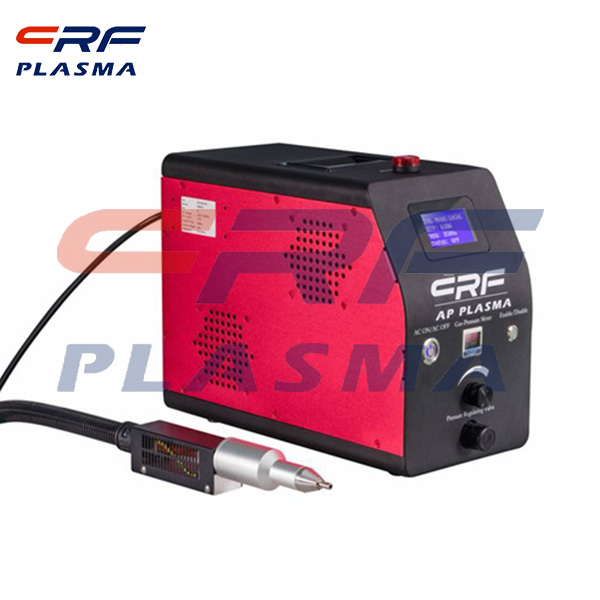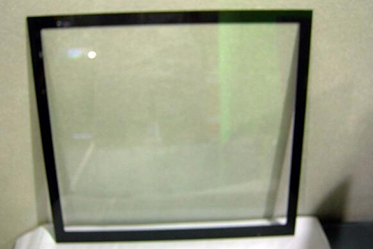
Welcome to Shenzhen Sing Fung Intelligent Manufacturing Co., Ltd.
E-mail:shaobo@sfi-crf.com
Advanced side wall etching technology of plasma flame machine
- Categories:Industry News
- Author:plasma cleaning machine-surface treatment equipment-CRF plasma machine-Sing Fung Intelligent Manufacturing
- Origin:
- Time of issue:2020-12-11
- Views:
(Summary description)Conventional silicon nitride side wall plasma flame machine plasma etching improves selectivity by using high hydrogen fluorocarbon gas and achieves anisotropy by increasing ion bombardment. When the lateral wall film and the oxide stop layer are thicker, the effect is not obvious. But in some side SO Ⅰ etching, sidewall etching stop directly on silicon or germanium silicon material of the channel. The damage of channel material needs to be strictly controlled to a certain extent. Beyond a certain limit, the damage will seriously affect the performance of the device. At present, even with low ionic energy, the plasma electron temperature can only be controlled at 20eV on the plasma flame etching machine used by traditional industry. Germanium and silicon matrix materials were still damaged up to 15Å by using the optimized side wall etching process with CH3F gas containing 50% over-etching amount. To reduce the damage of matrix material, it is necessary to further reduce the electron temperature to reduce the plasma electric potential and the ion energy. At present, the effective methods include high pressure mode and synchronous pulse plasma mode. By adjusting the duty ratio in pulse mode, the electron temperature can be reduced. The synchro pulsed plasma of plasma flame machine uses the rf of source power and the RF of offset power on and off, which makes the stability of synchro pulse more difficult to control, and the etching rate also drops sharply. In plasma with low electron temperature, the wide scattering of ions reduces the directivity of ions and at the same time weakens the directivity of etching, which is difficult to accept for the etching of side wall with accurate width control. Similarly, in the high pressure etching mode, in addition to the ion scattering problem caused by the electron temperature decrease, the longer gas residence time will make the etching uniformity worse, which needs to be solved together with other complex uniformity improvement methods. In order to solve the problem of the previously discussed, meet the needs of demanding as feature sizes for miniature, plasma flame machine can use a similar atomic layer etching method, namely, the first to use H or He, and so on plasma processing on the surface of a silicon nitride, change the nature of the surface film layer, and then use the wet etching, such as, with a very dilute solution of hydrofluoric acid degeneration of surface film layer selectively be removed. As H is a light ion, it has almost no etching on the silicon nitride film compared with He, so it is used for the film treatment. In capacitor-coupled plasma etching machine, hydrogen concentration and injection depth of si3N4 surface film can be adjusted by modulating bias power and injection time. In the silicon nitride film, the concentration of H is closely related to the subsequent hydrofluoric acid etching rate. By controlling the concentration of hydrogen in the si3N4 film, the selective ratio of etching between the altered si3N4 film and the bulk si3N4 film was achieved. When the plasma flame machine etching stops in the side wall etching of germanium silicon material, the atom-like layer etching method can be used to control the silicon storage loss within 6Å.
Advanced side wall etching technology of plasma flame machine
(Summary description)Conventional silicon nitride side wall plasma flame machine plasma etching improves selectivity by using high hydrogen fluorocarbon gas and achieves anisotropy by increasing ion bombardment. When the lateral wall film and the oxide stop layer are thicker, the effect is not obvious. But in some side SO Ⅰ etching, sidewall etching stop directly on silicon or germanium silicon material of the channel. The damage of channel material needs to be strictly controlled to a certain extent. Beyond a certain limit, the damage will seriously affect the performance of the device. At present, even with low ionic energy, the plasma electron temperature can only be controlled at 20eV on the plasma flame etching machine used by traditional industry. Germanium and silicon matrix materials were still damaged up to 15Å by using the optimized side wall etching process with CH3F gas containing 50% over-etching amount.
To reduce the damage of matrix material, it is necessary to further reduce the electron temperature to reduce the plasma electric potential and the ion energy. At present, the effective methods include high pressure mode and synchronous pulse plasma mode. By adjusting the duty ratio in pulse mode, the electron temperature can be reduced. The synchro pulsed plasma of plasma flame machine uses the rf of source power and the RF of offset power on and off, which makes the stability of synchro pulse more difficult to control, and the etching rate also drops sharply. In plasma with low electron temperature, the wide scattering of ions reduces the directivity of ions and at the same time weakens the directivity of etching, which is difficult to accept for the etching of side wall with accurate width control. Similarly, in the high pressure etching mode, in addition to the ion scattering problem caused by the electron temperature decrease, the longer gas residence time will make the etching uniformity worse, which needs to be solved together with other complex uniformity improvement methods.
In order to solve the problem of the previously discussed, meet the needs of demanding as feature sizes for miniature, plasma flame machine can use a similar atomic layer etching method, namely, the first to use H or He, and so on plasma processing on the surface of a silicon nitride, change the nature of the surface film layer, and then use the wet etching, such as, with a very dilute solution of hydrofluoric acid degeneration of surface film layer selectively be removed. As H is a light ion, it has almost no etching on the silicon nitride film compared with He, so it is used for the film treatment. In capacitor-coupled plasma etching machine, hydrogen concentration and injection depth of si3N4 surface film can be adjusted by modulating bias power and injection time. In the silicon nitride film, the concentration of H is closely related to the subsequent hydrofluoric acid etching rate. By controlling the concentration of hydrogen in the si3N4 film, the selective ratio of etching between the altered si3N4 film and the bulk si3N4 film was achieved. When the plasma flame machine etching stops in the side wall etching of germanium silicon material, the atom-like layer etching method can be used to control the silicon storage loss within 6Å.
- Categories:Industry News
- Author:plasma cleaning machine-surface treatment equipment-CRF plasma machine-Sing Fung Intelligent Manufacturing
- Origin:
- Time of issue:2020-12-11 09:21
- Views:
Advanced side wall etching technology of plasma flame machine:
Conventional silicon nitride side wall plasma flame machine plasma etching improves selectivity by using high hydrogen fluorocarbon gas and achieves anisotropy by increasing ion bombardment. When the lateral wall film and the oxide stop layer are thicker, the effect is not obvious. But in some side SO Ⅰ etching, sidewall etching stop directly on silicon or germanium silicon material of the channel. The damage of channel material needs to be strictly controlled to a certain extent. Beyond a certain limit, the damage will seriously affect the performance of the device. At present, even with low ionic energy, the plasma electron temperature can only be controlled at 20eV on the plasma flame etching machine used by traditional industry. Germanium and silicon matrix materials were still damaged up to 15Å by using the optimized side wall etching process with CH3F gas containing 50% over-etching amount.
To reduce the damage of matrix material, it is necessary to further reduce the electron temperature to reduce the plasma electric potential and the ion energy. At present, the effective methods include high pressure mode and synchronous pulse plasma mode. By adjusting the duty ratio in pulse mode, the electron temperature can be reduced. The synchro pulsed plasma of plasma flame machine uses the rf of source power and the RF of offset power on and off, which makes the stability of synchro pulse more difficult to control, and the etching rate also drops sharply. In plasma with low electron temperature, the wide scattering of ions reduces the directivity of ions and at the same time weakens the directivity of etching, which is difficult to accept for the etching of side wall with accurate width control. Similarly, in the high pressure etching mode, in addition to the ion scattering problem caused by the electron temperature decrease, the longer gas residence time will make the etching uniformity worse, which needs to be solved together with other complex uniformity improvement methods.
In order to solve the problem of the previously discussed, meet the needs of demanding as feature sizes for miniature, plasma flame machine can use a similar atomic layer etching method, namely, the first to use H or He, and so on plasma processing on the surface of a silicon nitride, change the nature of the surface film layer, and then use the wet etching, such as, with a very dilute solution of hydrofluoric acid degeneration of surface film layer selectively be removed. As H is a light ion, it has almost no etching on the silicon nitride film compared with He, so it is used for the film treatment. In capacitor-coupled plasma etching machine, hydrogen concentration and injection depth of si3N4 surface film can be adjusted by modulating bias power and injection time. In the silicon nitride film, the concentration of H is closely related to the subsequent hydrofluoric acid etching rate. By controlling the concentration of hydrogen in the si3N4 film, the selective ratio of etching between the altered si3N4 film and the bulk si3N4 film was achieved. When the plasma flame machine etching stops in the side wall etching of germanium silicon material, the atom-like layer etching method can be used to control the silicon storage loss within 6Å.

Scan the QR code to read on your phone

TEL:0755-3367 3020 / 0755-3367 3019

E-mail:sales-sfi@sfi-crf.com

ADD:Mabao Industrial Zone, Huangpu, Baoan District, Shenzhen


















